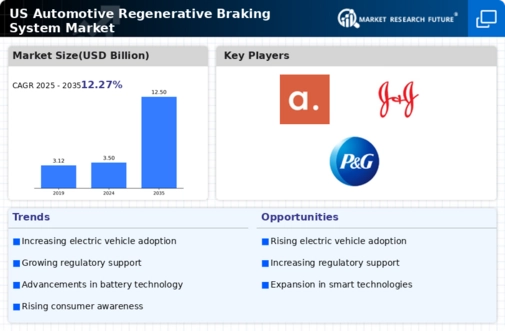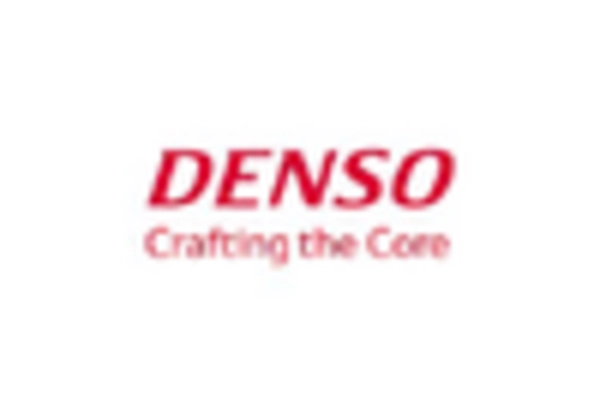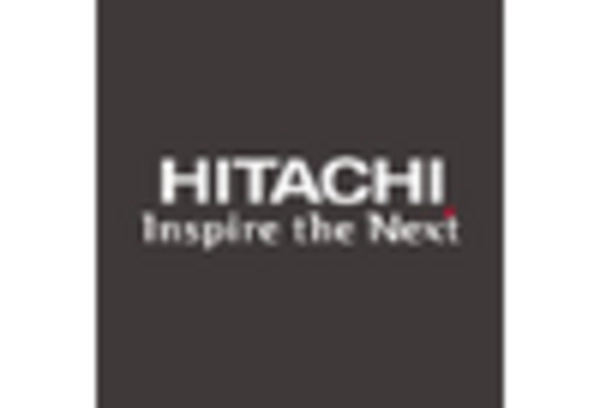The automotive regenerative-braking-system market is currently characterized by a dynamic competitive landscape, driven by technological advancements and a growing emphasis on sustainability. Key players such as Bosch (DE), General Motors (US), and Toyota (JP) are at the forefront, each adopting distinct strategies to enhance their market positioning. Bosch (DE) focuses on innovation, particularly in integrating advanced sensor technologies to improve braking efficiency, while General Motors (US) emphasizes partnerships with tech firms to enhance their electric vehicle (EV) offerings. Toyota (JP), on the other hand, is leveraging its extensive experience in hybrid technology to refine its regenerative braking systems, thereby reinforcing its leadership in the hybrid vehicle segment. Collectively, these strategies contribute to a competitive environment that is increasingly centered on technological differentiation and sustainability initiatives.
In terms of business tactics, companies are increasingly localizing manufacturing to reduce supply chain vulnerabilities and optimize operational efficiency. The market structure appears moderately fragmented, with several players vying for market share, yet dominated by a few key firms that significantly influence pricing and innovation trends. This competitive structure allows for a diverse range of products and solutions, catering to various segments within the automotive industry.
In October 2025, Bosch (DE) announced the launch of a new regenerative braking system designed specifically for electric vehicles, which integrates AI-driven predictive analytics to enhance energy recovery. This strategic move not only positions Bosch as a leader in the EV market but also underscores the growing importance of AI in optimizing vehicle performance. The introduction of this technology is likely to set new benchmarks for efficiency in regenerative braking systems.
In September 2025, General Motors (US) revealed a partnership with a leading software company to develop a next-generation regenerative braking system that utilizes real-time data analytics. This collaboration aims to improve the responsiveness and efficiency of braking systems in their upcoming EV models. The strategic importance of this partnership lies in its potential to enhance user experience and safety, thereby attracting a broader customer base in the competitive EV market.
In August 2025, Toyota (JP) unveiled its latest hybrid model featuring an upgraded regenerative braking system that boasts a 15% increase in energy recovery efficiency. This enhancement reflects Toyota's commitment to continuous improvement in hybrid technology, reinforcing its competitive edge. The strategic significance of this development is profound, as it not only enhances vehicle performance but also aligns with the growing consumer demand for more sustainable automotive solutions.
As of November 2025, the competitive trends in the automotive regenerative-braking-system market are increasingly defined by digitalization, sustainability, and the integration of AI technologies. Strategic alliances are becoming pivotal, as companies seek to leverage complementary strengths to innovate and enhance product offerings. Looking ahead, competitive differentiation is likely to evolve from traditional price-based competition to a focus on innovation, technological advancements, and supply chain reliability, reflecting the industry's shift towards more sustainable and efficient automotive solutions.

















Leave a Comment